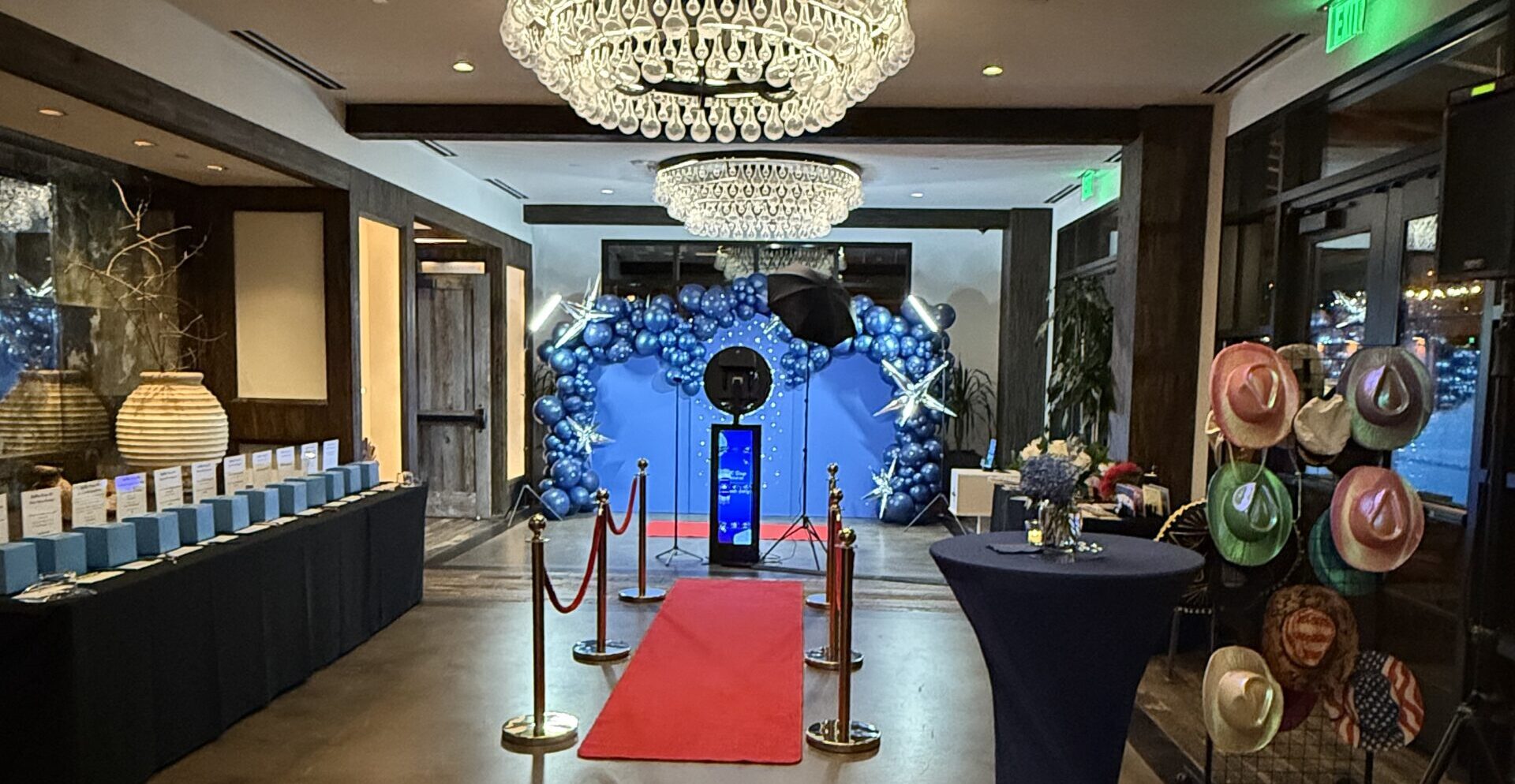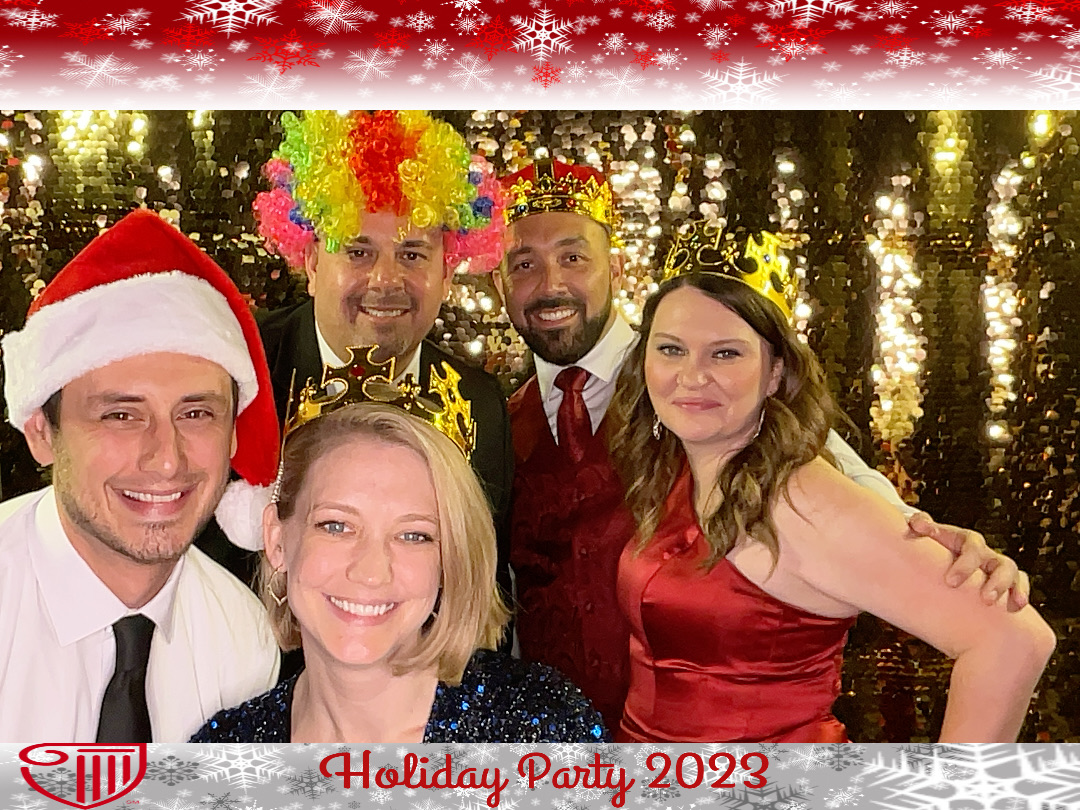Creating an engaging corporate event is a challenging yet rewarding task for event planners. Employee engagement is a crucial factor in determining the success of such events. One innovative way to enhance engagement is by incorporating a photo booth. In this blog post, we will explore how to boost employee engagement at corporate events using a photo booth, along with other corporate event ideas and team-building activities.
Why Employee Engagement Matters
Employee engagement is more than just a buzzword; it’s a key element in fostering a productive and happy work environment. Engaged employees are more likely to be motivated, committed, and satisfied with their jobs. This translates into better performance, higher retention rates, and a more positive company culture. Corporate events offer an excellent opportunity to boost employee engagement by providing a break from the daily grind and allowing team members to connect in a relaxed setting.
When employees are engaged, they exhibit higher levels of enthusiasm and dedication towards their work. This not only boosts individual performance but also enhances overall team collaboration. Furthermore, engaged employees are more likely to become advocates for your company, positively representing your brand both internally and externally. Therefore, investing in engaging corporate events is a strategic move that pays off in multiple ways.
Incorporating a Photo Booth: A Fun and Interactive Idea
One of the most popular corporate event ideas is to include a photo booth. Photo booths are not only fun but also serve as excellent icebreakers. They encourage employees to let loose and interact with each other in a casual, enjoyable manner. Here are some ways a photo booth can boost employee engagement at your next corporate event:
- Encourages Interaction – A photo booth provides a shared activity that employees can enjoy together, fostering team-building and camaraderie. As employees take turns posing and laughing together, it breaks down barriers and creates a more cohesive team environment.
- Creates Lasting Memories – The photos taken can serve as lasting memories of the event, reinforcing positive experiences and relationships formed during the event. These tangible keepsakes can be displayed in the office or shared on social media, continually reminding employees of the fun they had.
- Personalized Experience – Customizing the photo booth with company branding or event-specific props can make the experience more memorable and relevant to your team. Personalized backdrops, props, and photo frames can enhance the sense of belonging and pride among employees.
- Social Media Engagement – Encourage employees to share their photos on social media with a specific hashtag to increase online engagement and promote your company culture. This not only boosts morale but also showcases your company’s vibrant and engaging work environment to a broader audience.
Other Corporate Event Ideas to Boost Engagement
While a photo booth can significantly enhance employee engagement, it’s essential to consider a variety of corporate event ideas to keep things fresh and exciting. Here are some additional ideas to consider:
Team-Building Activities
Team-building activities are a great way to strengthen bonds among employees and encourage collaboration. Some popular team-building activities include:
- Escape Rooms – These interactive puzzles require teamwork and problem-solving skills, making them an excellent choice for team-building. Employees must work together to solve clues and escape within a time limit, fostering a sense of urgency and collaboration.
- Workshops – Hosting workshops on topics like leadership, communication, or creativity can provide valuable learning experiences while fostering team spirit. Interactive sessions allow employees to develop new skills and apply them in a supportive group setting.
- Outdoor Adventures – Activities like hiking, kayaking, or scavenger hunts can offer a refreshing break from the office and promote teamwork in a fun setting. These adventures encourage employees to rely on each other, building trust and camaraderie.
Incorporating a variety of team-building activities can cater to different interests and preferences, ensuring that all employees find something enjoyable and engaging. By providing opportunities for employees to connect outside the traditional work environment, you can foster stronger relationships and a more united team.
Interactive Sessions and Workshops
Incorporating interactive sessions and workshops into your corporate event planning can keep employees engaged and provide valuable learning opportunities. Consider hosting sessions on topics that align with your company’s goals or address common challenges faced by your team. Interactive workshops can also be tailored to specific departments or skill sets, ensuring that the content is relevant and engaging for all attendees.
Additionally, interactive sessions can break up the monotony of traditional presentations, making the event more dynamic and lively. Encourage participants to ask questions, engage in group discussions, and participate in hands-on activities. This approach not only keeps employees attentive but also allows them to gain practical insights and skills that can be applied in their daily work.
Entertainment and Relaxation
Corporate events should strike a balance between work and play. Incorporating entertainment and relaxation options can help employees unwind and enjoy themselves. Some ideas include:
- Live Music or DJ – Music can set the tone for your event and create a lively atmosphere that encourages socializing and dancing. A well-chosen playlist or live performance can energize the crowd and make the event more memorable.
- Food and Drink Stations – Offering a variety of food and drink options can cater to different tastes and provide a casual setting for employees to mingle. Consider including themed stations, such as a sushi bar or a craft beer tasting, to add an element of excitement and novelty.
- Wellness Activities – Including activities like yoga, meditation, or massages can help employees relax and recharge during the event. These wellness options show that you care about your employees’ well-being and can help reduce stress and promote a positive atmosphere.
By offering a mix of entertainment and relaxation options, you can create a well-rounded event that caters to the diverse needs and preferences of your employees. This approach ensures that everyone has the opportunity to unwind, have fun, and connect with their colleagues in a meaningful way.
Effective Corporate Event Planning
Successful corporate event planning requires careful consideration of various factors, including the event’s objectives, budget, and logistics. Here are some tips to ensure your event is engaging and well-organized:
- Set Clear Goals – Define the purpose of your event and outline specific objectives you want to achieve, such as boosting employee morale, fostering teamwork, or celebrating achievements. Clear goals provide direction and help you measure the event’s success.
- Plan Ahead – Start planning well in advance to secure the best venues, vendors, and activities. This also allows you to communicate the event details to employees early, generating excitement and anticipation. Early planning helps avoid last-minute issues and ensures a smooth execution.
- Gather Feedback – Collect feedback from employees before and after the event to understand their preferences and identify areas for improvement. This can help you tailor future events to better meet their needs and expectations. Use surveys, focus groups, or informal conversations to gather valuable insights.
- Personalize the Experience – Customize the event to reflect your company’s culture and values. This can include incorporating company branding, recognizing employee achievements, or aligning activities with your organization’s mission. Personal touches make the event more meaningful and memorable for attendees.
Effective corporate event planning involves a combination of strategic thinking, creativity, and attention to detail. By focusing on these key aspects, you can create engaging corporate events that resonate with your employees and achieve your desired outcomes.
Measuring the Success of Your Corporate Event
To determine the success of your corporate event, it’s essential to measure employee engagement and gather feedback. Here are some ways to assess the impact of your event:
- Surveys and Feedback Forms – Distribute surveys or feedback forms to gather insights on employees’ experiences and identify areas for improvement. Ask specific questions about what they enjoyed, what could be improved, and how the event impacted their engagement and morale.
- Attendance and Participation Rates – Monitor attendance and participation rates to gauge the level of engagement and interest in the event. High attendance and active participation indicate that the event was well-received and engaging.
- Social Media Activity – Track social media engagement, such as the number of posts, likes, and shares, to measure the event’s impact on your company’s online presence. Social media activity can provide insights into how employees and external audiences perceive your event.
- Employee Morale and Productivity – Observe any changes in employee morale and productivity following the event to assess its long-term effects on your team. Positive changes in these areas suggest that the event successfully boosted engagement and motivation.
Measuring the success of your corporate event involves both quantitative and qualitative methods. By combining these approaches, you can gain a comprehensive understanding of the event’s impact and identify opportunities for future improvement.
Leveraging Technology for Enhanced Engagement
In today’s digital age, leveraging technology can significantly enhance employee engagement at corporate events. By incorporating various tech tools and platforms, you can create a more dynamic and interactive experience for your attendees. Here are some ways to integrate technology into your corporate event planning:
- Event Apps – Event-specific apps can provide attendees with real-time updates, schedules, and interactive maps. These apps can also feature networking options, allowing employees to connect with colleagues and share their experiences during the event.
- Live Polling and Q&A Sessions – Utilize live polling and Q&A platforms to encourage participation and gather instant feedback from attendees. This interactive approach keeps employees engaged and allows them to voice their opinions and questions in real-time.
- Virtual Reality (VR) and Augmented Reality (AR) – Integrate VR and AR experiences to create immersive and memorable activities. These technologies can be used for virtual team-building exercises, product demonstrations, or interactive training sessions.
- Gamification – Implement gamification elements, such as leaderboards, rewards, and challenges, to motivate employees and make the event more engaging. Gamification can drive participation and foster a sense of friendly competition among attendees.
By incorporating technology into your corporate events, you can create a more engaging and interactive experience that resonates with your employees. This modern approach not only enhances participation but also demonstrates your company’s commitment to innovation and staying current with technological trends.
Post-Event Follow-Up and Engagement
The engagement efforts shouldn’t end when the event concludes. Post-event follow-up is crucial in maintaining the momentum and reinforcing the positive experiences from the event. Here are some strategies for effective post-event engagement:
- Share Event Highlights – Distribute a post-event newsletter or create a blog post highlighting key moments, achievements, and memorable experiences from the event. Including photos and videos can make the recap more engaging and visually appealing.
- Recognize Contributions – Acknowledge and thank employees who contributed to the event’s success, whether through organizing, participating, or demonstrating outstanding teamwork. Public recognition can boost morale and show appreciation for their efforts.
- Implement Feedback – Review the feedback received from surveys and discussions, and implement actionable suggestions for future events. Demonstrating that you value employees’ input and are willing to make improvements can foster a culture of continuous engagement and collaboration.
- Plan Follow-Up Activities – Organize follow-up activities or meetings to maintain the connections formed during the event. This could include lunch gatherings, team-building exercises, or informal networking sessions to keep the momentum going.
Effective post-event follow-up ensures that the positive impact of your corporate event extends beyond the day itself. By maintaining engagement and recognizing contributions, you can reinforce the sense of community and collaboration within your organization.
Creating a Culture of Engagement
While corporate events play a significant role in boosting employee engagement, fostering a culture of engagement requires ongoing effort and commitment. Here are some strategies to create a culture of engagement within your organization:
- Open Communication – Encourage open and transparent communication at all levels of the organization. This includes regular updates, feedback sessions, and open-door policies that allow employees to voice their concerns and ideas.
- Employee Recognition Programs – Implement programs that recognize and reward employees for their hard work and contributions. This could include monthly awards, peer recognition, or incentive programs that highlight achievements and milestones.
- Professional Development Opportunities – Offer continuous learning and development opportunities to help employees grow and advance in their careers. This can include training programs, workshops, mentorship, and access to online learning platforms.
- Work-Life Balance – Promote a healthy work-life balance by offering flexible work arrangements, wellness programs, and support for personal and family needs. Prioritizing employee well-being can lead to higher satisfaction and engagement.
Creating a culture of engagement requires a holistic approach that integrates various initiatives and practices. By prioritizing communication, recognition, development, and well-being, you can foster an environment where employees feel valued, motivated, and connected to their work and colleagues.
Conclusion
Boosting employee engagement at corporate events is a multifaceted endeavor that involves careful planning, creative ideas, and ongoing efforts. By incorporating elements such as photo booths, team-building activities, interactive sessions, and leveraging technology, you can create engaging corporate events that resonate with your employees. Additionally, effective post-event follow-up and a commitment to fostering a culture of engagement can ensure that the positive impact of your events extends beyond the day itself. Remember, a well-engaged workforce is not only more productive and satisfied but also contributes to a more vibrant and successful organizational culture.
By embracing these strategies and continuously seeking ways to improve, you can create memorable and impactful corporate events that leave a lasting impression on your employees and drive your organization’s success.
Stay tuned for more tips and insights on corporate event planning and how to create meaningful and engaging experiences for your team.





